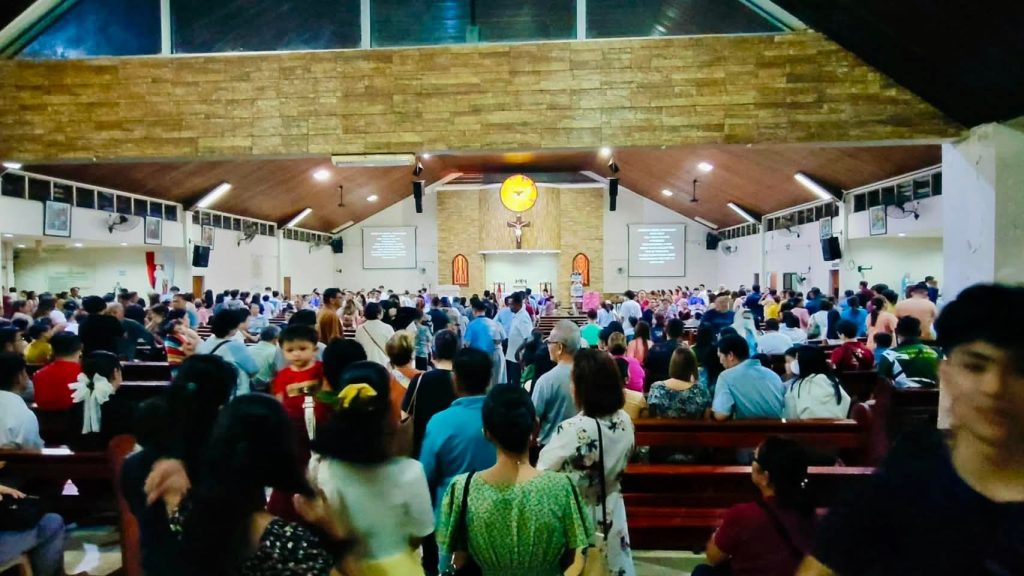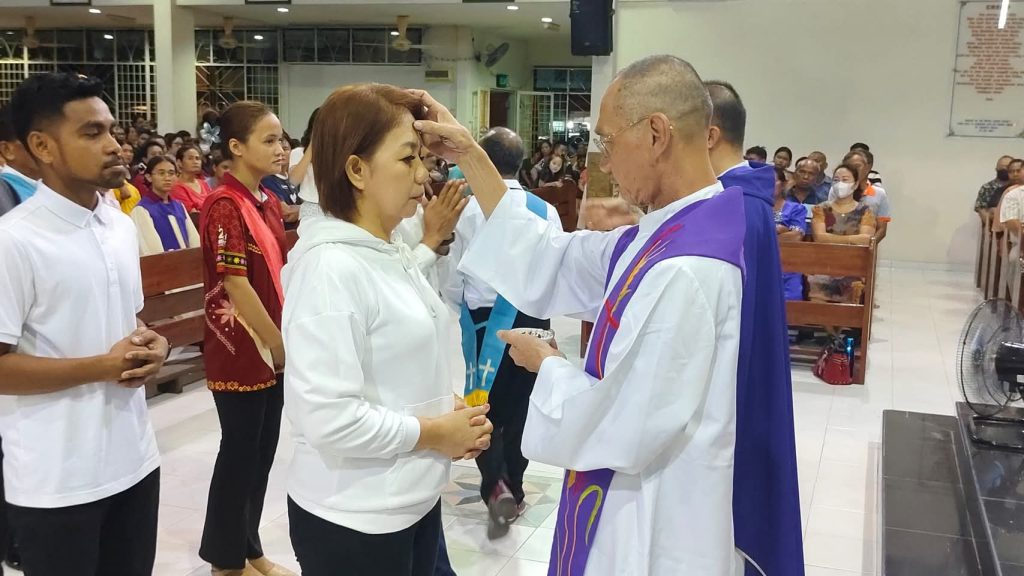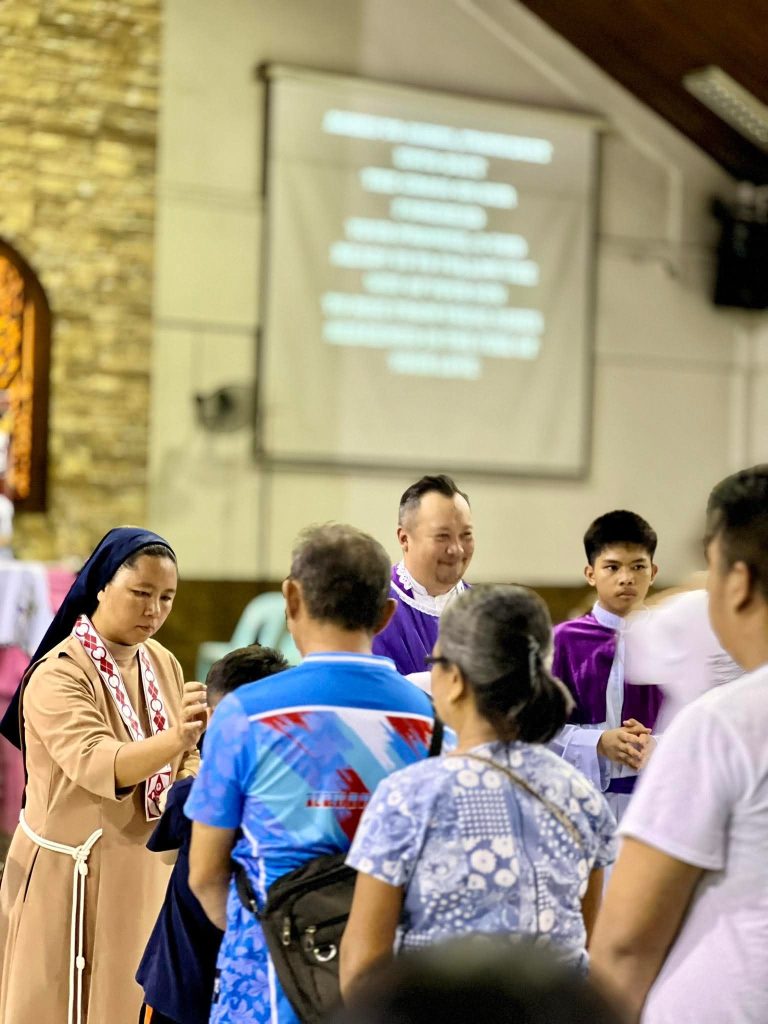Article by Mazdollyna Majalin Eborok
Photo by Soccom Lahad Datu
LAHAD DATU, 5 March 2025 – Ash Wednesday, observed by Catholics around the world, marks the solemn beginning of Lent, the 40-day period of prayer, fasting, and almsgiving that prepares the heart for the joy of Easter. Ash Wednesday is more than a ritual; it invites all parishioners to face their humanity, to accept humility, and to recommit themselves to spiritual growth. Its deep symbolism and practice offer timeless lessons for Catholics and anyone who wants to understand the richness of this tradition.

Central to Ash Wednesday is the imposition of ashes, where we as a Catholic worshippers receive a cross of burnt palm leaves on their foreheads. These ashes carry dual significance, first; that you are dust, and to dust you shall return (Genesis 3:19): It is also a stark reminder of human frailty and mortality, and a call to reflect on the ephemeral nature of life as a Catholic. Secondly, we shall Repent and believe in the Gospel (Mark 1:15): A call to each of us to turn from sin and to align our lives with the teachings of Jesus Christ.

In his homily, the Rev. Stanley William Matakim also mentioned that Ash Wednesday is a time of deep reflection on the mystery of our salvation, a time of reconciliation, prayer and almsgiving. These practices are not about punishment, but about purification. As Pope Francis once said, “Lent is a time to free ourselves from the illusions that chase away eternity.”


Ash Wednesday is not a dead end, but a promising new beginning. It calls us to face our shortcomings and hold fast to the promise of change. The ashes, though temporary, bear a permanent truth: by acknowledging their limitations, the parishioners of St. Dominic open themselves to God’s infinite mercy.
